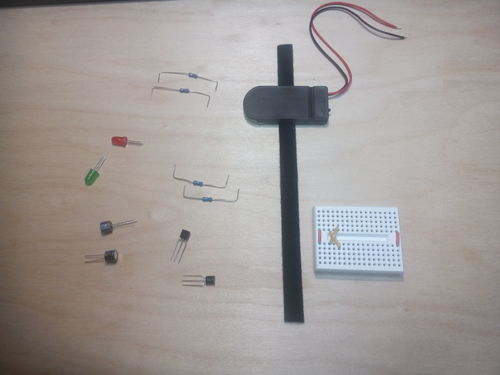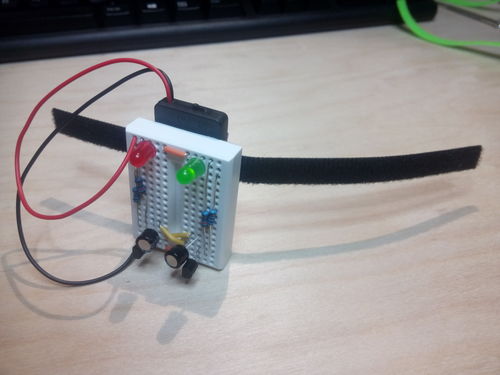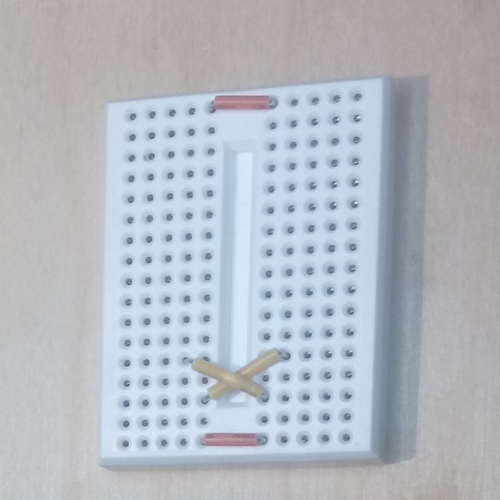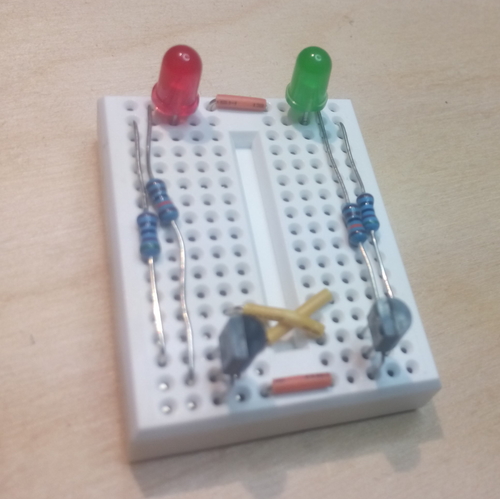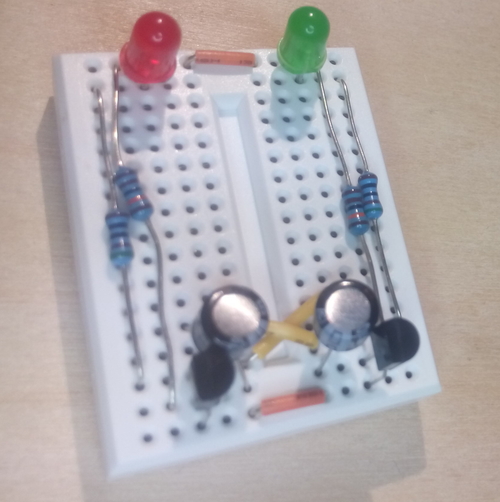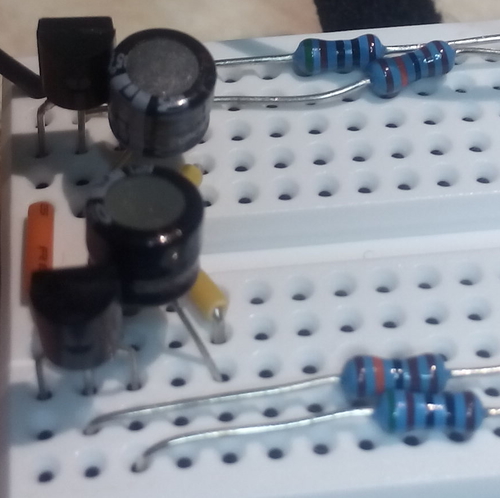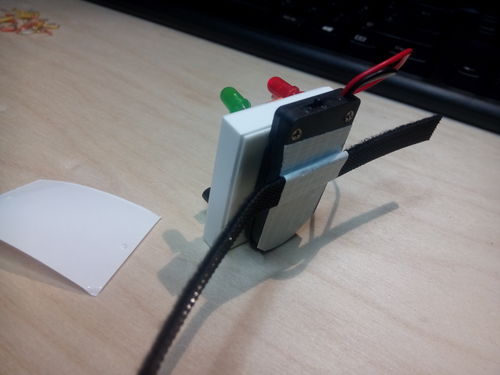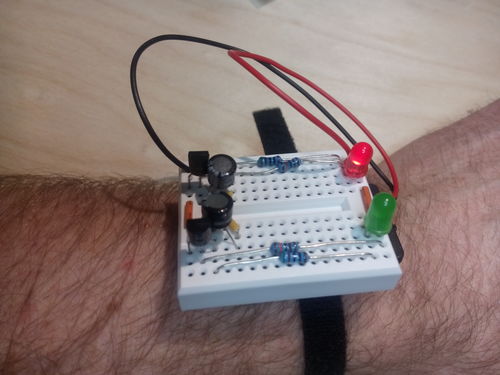We're going to make a flipflop! Also known as a astable multivibrator (just so's you know). The flipflop makes two LEDs flash on and off, and you can wear it round your wrist, hanging from an earing or (ask a grownup first) pushed up your nose.
(To read this online and learn how it works go to: http://tinyurl.com/floppety )
These are the bits:
And this is what it looks like when finished:
Ok, let's get started! (Twiddle your fingers a few times — it's going to get fiddly!)
Put the breadboard with the crossed wires towards you:
Add the two shorter resistors (the ones without the orange bands):
Now add the longer resistors (with orange bands):
Now the LEDs. These have a small flat place on their rim on one side — place this flat side facing down the board:
Getting close! Now place the two transistors with their flat sides facing to the left:
And finally the two capacitors — these must have the side with the grey strip (with the minus sign on) towards the bottom of the board:
Now peel the sticky backing off the breadboard and fit it to the top of the battery pack:
Plug it in (red wire to the top row, black to the bottom), turn it on and strap it to a body part:
Now do a double backflip and a sideways falco with a twist.
If you want to suck up all the nerdie knowhow read on...
If we draw a schematic, the LED flasher circuit that we built looks like this:
 (From here.)
(From here.)
The zigzaggy things are the resistors; the little circles are the LEDs; the big circles the transistors and the twin lines (one curved) are the capacitors.
Capacitors store charge. When the power is turned on, whichever one fills up quickest turns on the transistor which it is attached to — and current flows down that side of the circuit, lighting up the LED in the process. As it gradually loses its charge, the other side ramps up and the other LED lights up. (Or something like that!)
Flipflop circuits have been around for a hundred years or so. Back then they were built with electronic valves — big hot glass things that glowed in the dark. Now we use transistors, and these days a posh phone contains a few billion of them!
The same principle that makes the LEDs flash on and off is used to store one bit of memory in a phone or computer. (A bit is a binary digit — or a number which is either 0 or 1. You need quite a lot of them to store selfies or youtube videos or 3D models of Paddington Bear or whatever.)
There's more history here — http://en.wikipedia.org/wiki/Multivibrator.
And a great write-up of the details here: http://www.talkingelectronics.com/projects/5-Projects/Projects16.html
Happy flopping!
